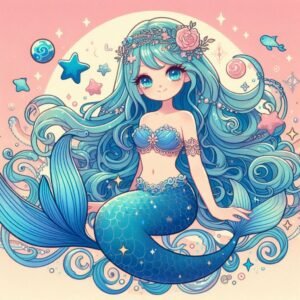( Written by my colleague writer )
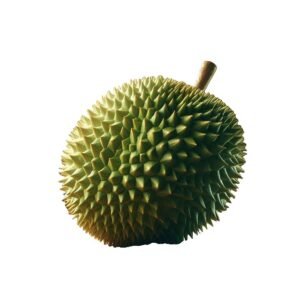 1. DURIAN – Our First Experience in Borneo.
1. DURIAN – Our First Experience in Borneo.
February 2011,Bintulu, Borneo, Malaysia.
How I Found a New Fruit Called Durian
It was a hot and humid morning in February 2011 when I arrived in Bintulu, a town in the Sarawak province of Borneo, Malaysia. A short ride from the local airport, and the taxi pulled up to my hotel. Peter, my colleague, was waiting for me in the lobby. He sent a cab to pick me up from the airport and booked a room. The official celebrations of the Chinese New Year had ended a few days ago. However, the occasional burst of fireworks still shattered the calm streets as a reminder of the festivities.
Just as I began to check in, a sharp, loud crackle erupted outside the hotel entrance. Startled, I turned toward the noise. A group of kids had set off the petards. Their giggles and happy shouts accompanied the blasts. The annoyed hotel manager hurried to the exit, but the children were long gone. He returned to the lobby and, in an apologizing tone, explained that this wasn’t the first time. Just yesterday, he’d taped a warning sign to the door, “NO FIREWORKS NEAR THE HOTEL.” But the poster had vanished by morning, and the nasty kids continued to bother the guests. “They still have a lot of petards,” Peter laughed.
As I glanced around the lobby, something else caught my eye. Behind the reception desk were two warning signs above a row of clocks showing world time. The first was the familiar “No Smoking,” but the second was a special one: a thorny fruit inside a red, back-slashed circle. The sign read, “NO DURIAN ALLOWED!” The fruit resembled a pineapple grenade, and I wondered if “durian” was a local term for fireworks or petards. To my surprise, the same sign I saw above the elevator door.
“What does ‘Durian’ mean?” I finally asked Peter, pointing toward the sign. “It’s a local delicacy,” he said in a mysterious tone, “something you must try.”
“Then why is it forbidden if it has nothing to do with explosives?” I asked.
Peter burst out laughing. “Oh, it is a funny idea. No, it is not explosive, but its smell… We can talk about it later,” he said. “Take a shower and get rest. You must be exhausted after such a long trip.”
That evening, we sat in Peter’s room drinking cold lemonade. Peter briefed me about our job site and the town in general. Then he opened his laptop.
“Read this,“ he said, showing me the article. “It’s all about Durian.“ Intrigued, I began scrolling through the descriptions of the so-called “King of Fruits.“ Each article repeated the same key phrase: “It smells like hell but tastes like paradise.“
“In this place, during our business trip, we have a unique opportunity to explore local cuisine and traditions. And durian is something we must try. Maybe it is a once-in-a-lifetime chance,” Peter said with a grin. I had no objection to this idea.
“Well, let’s try,” I said.
“It is not as easy as you think,” Peter answered thoughtfully.
“What’s the matter? Is this durian expensive or difficult to find?”
“Have you seen the prohibition signs? No durian is allowed in the hotel. We can buy it on the local market. There are plenty of these fruits there. And we can do it only on Sunday morning. Then we must find a way to store it till Monday morning. We can try it during lunchtime in the office at the job site,” Peter said quietly.
“And what about the office? Isn’t durian forbidden there?“ I asked.
“It is not an issue. I have already spoken with Mr. Tan, the office manager. He is a local guy and, like most of the local people, adores durians. This fruit is welcome there.”
There was also an Englishman, Tom, who didn’t mind durian in the office. He had already had some experience with the fruit in interest.
It was clear that purchasing durian was easy; storing it overnight and bringing it to the job site was a challenge.
The following week, we were busy working on the job site. I had already forgotten about a thorny, coveted fruit. On Saturday, the last working weekday, Peter reminded me about durian.
“I have a plan. We can use the help of our driver.”
A taxi driver, a local man, took us daily from the hotel to the works and back. His private car was an old TOYOTA.
“I am going to make a deal with our driver,” said Peter.
The driver was a local and quickly agreed to the plan.
Local Market Pasar – a Place to Buy the Durian and More.
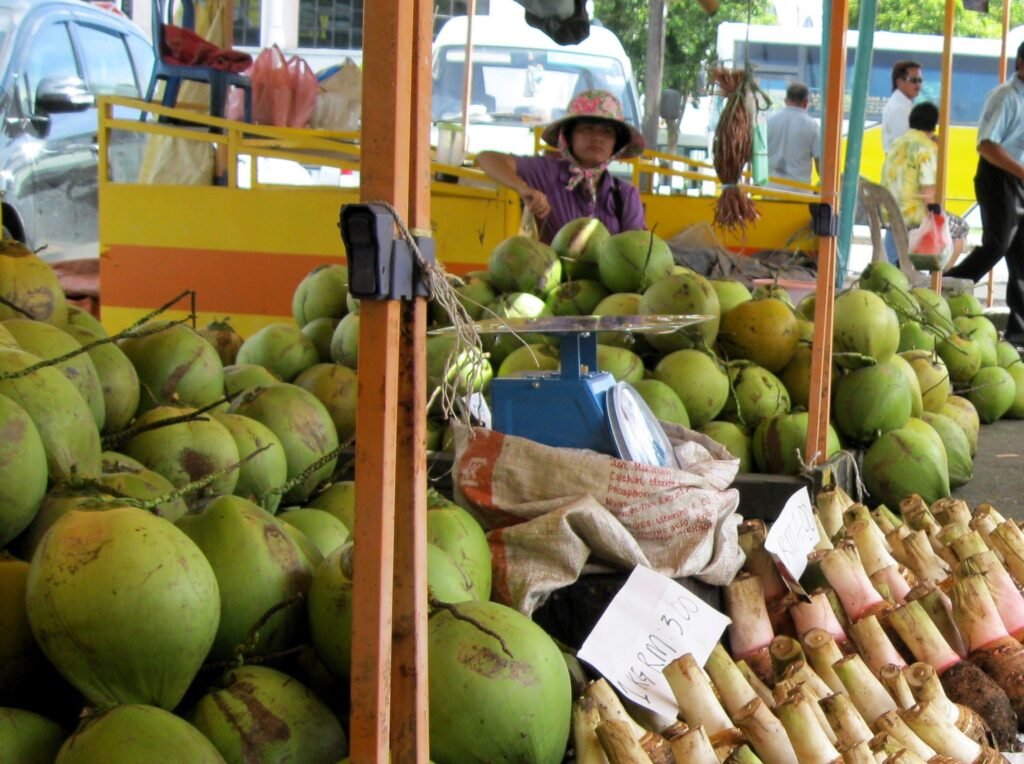
On Sunday, we visited Pasar – the local market. To my surprise, Peter was already well-known to many people. Vendors greeted him with friendly smiles.
We stopped at the pile of coconuts. The young lady who owned the stall greeted us, “Salemat pagi. As usual, coconut?”
Peter answered, smiling, “Good day. Today, we take a double portion.”
The coconuts were selected and prepared for consumption. A small hole was made in the coconut shell to accommodate a straw.
“At first, drink juice,” explained Peter.
When we finished with the coconut juice, the lady cut each coconut in half. Then, it was time to try its flash using improvised spoons made of coconut shells.
We thanked the lady vendor for the delicious treat and got up.
“And now it is time to look for the durians,” said Peter.
It didn’t take long to find them. The thorny fruits were piled next to pineapples and bananas.
Peter picked one mid-sized fruit. I can say nothing about its grade, sort, or quality. It was my first encounter with durian, and I could not imagine its commercial value. We paid 7 MYR (about 2 USD). Peter was satisfied and estimated our purchase to be a good one. At least it smelled a lot. Later, however, I learned that my friend had no idea about that one durian.
As agreed, the taxi driver arrived at 2 p.m. He wrapped the smelly fruit and put it into the trunk. “We should pack durian more thoroughly. Otherwise, you will have a rather smelly car,” said Peter. The driver laughed and explained that the durian would stay in the trunk for only half an hour. He lived in the village nearby. At home, he could store our fruit outside the car.
“And don’t worry, I will pack it properly for Monday,” he added. The driver got his tip and drove away.
Time to try Durian
As we arrived at the plant the following day, Peter opened the trunk and put the carefully packed durian in his backpack. Nobody asked us about any prohibited items at the gate. The most important safety rules for the plant were the complete prohibition of smoking and alcohol drinks. Durian was not mentioned at all.
Mr. Tan, the office manager, was very busy that day. He was due to drive to someplace with his assistants just before lunchtime. Nevertheless, he found time to advise us about the durian and wished to enjoy it. Tom, the Englishman, was smiling. He had already tried the smelly fruit months ago.
Shortly before lunchtime, Peter went to the kitchen, where our durian was safely placed in the fridge. I followed him, curious to see the whole procedure. As Peter started to unpack the durian, a strong smell filled the kitchen despite the open windows. Then Peter took a big knife resembling a machete and cut the fruit. Now, the smell was not only strong but rather disgusting. And the internal messy flash was looking horrible. I lost any desire to try and went back to my place.
In a moment, Peter returned to the office carrying a plate with the durian cut in two halves. Something was wrong with that fruit. Messy pulp looked pretty different compared to the flashy white seeds shown in the images on the website. It somewhat resembled a kind of dirty brown jelly. And the smell was just unbearable. Different people can depict this stink in various ways. Some associate it with rotten eggs, some tell of the odor of dirty socks mixed with onion, and some smell notes of sewage. I just tried not to look at the plate.
Peter also seemed to be embarrassed by the smell and appearance of the durian. Not a good value. He offered me to take some flash with a spoon. I declined his offer politely, trying not to look at the mess and hold my breath. Peter offered the durian to Tom. And Tom politely declined the treat. Peter sighed and cautiously tried a small piece of flashy seed. As I could see his grimace, it did not appear as heavenly delightful as depicted in the article about the “king of the fruit.” He swiftly wrapped the remnants of durian in the waxed paper, put them in the plastic bag, and hurried to the exit.
In a few minutes, Peter came back to his desk. He uttered no word, no comment about his latest experience with the local delicacy. Tom glanced at him and asked with a hint of a sarcastic tone, “And what can you say? Was it delicious?” Peter didn’t answer, staring at the screen of his PC. No comments were needed. Since that day, Peter has never mentioned durian or his personal experience.
We had purchased the wrong fruit!
The following day, we entered the office and saw Mr. Tan sitting at his desk. He asked Peter, “And how did you find the durian? Tasty or kind of unusual?“
Peter produced his cell phone and showed the pictures he had taken before throwing the disgusting fruit in the waste bin.
“No, it was not delicious, rather disgusting.”
Tan was looking at the images with disbelief.
“Oh, it looks horrible, really disgusting. You have purchased rotten fruit. Before buying a durian, ask a local expert to help you choose the right one. I can help you if you want to buy a durian once again.”
Peter shook his head. “No, thank you. One time is enough to remember. I prefer to have the coconuts. And there are many other things to explore.“
Tan shrugged his shoulders. What can you expect from these foreigners?
We stayed with Peter in Bintulu for more than six weeks. On Sundays, we explored the town, its outskirts, and the local market, and even got an unguided tour through the jungle. And he never again mentioned the durian or his personal experience with the “KING OF THE FRUITS.“
At that time, I couldn’t imagine that in the future, I would have many opportunities to take a close look at durian and open its original taste.


 2. Durian for Dessert in Java.
2. Durian for Dessert in Java.
January 2015, Tuban Regency, Java, Indonesia
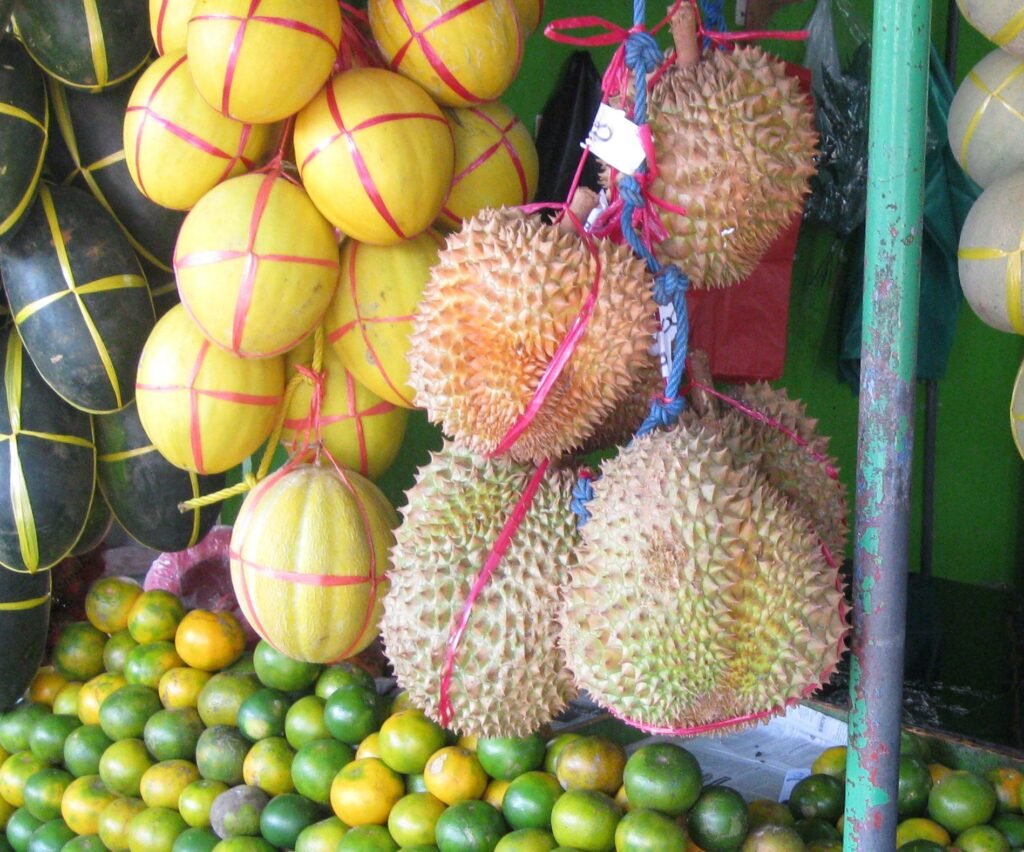
Durian Appeared to be Welcome in the Resort.
In January 2015, I had a service trip to Java, Indonesia. My job site was about 100 km from Surabaya, in Tuban Regency. No hotels were nearby, so the Customer arranged a cottage for me in a local resort. A local guy named Eddy provided transportation from the cottage to the plant and back. Sometimes, we stopped at the street lined with vendor stalls. There were various exotic tropical fruits and kinds of local fast food. I could buy dragon fruits, snake fruits, rambutans, avocados, and more. Once, as we stopped, Eddy asked me if I had tried durian. I told him about my previous bad experience with that thorny fruit and our failed attempt to explore the local delicacy in Bintuly. He laughed, suggesting I got the wrong impression of that excellent fruit.
“Durian deserves to be the king of the fruits,” proudly added Eddy.
He told me that in his village, all people adore durians.
They like not only fresh fruits. Durian is used in many products, including jam, juice, ice cream, and even chocolate.
It sounded unconvincing, for I still remembered the disgusting smell and jelly mess of that special one in Bintuly.
“If you’d like, we can buy durian so you can try it again. I guess you will change your mind about this delightful fruit,” suggested Eddy.
I asked if it is allowed to bring durian to the cottage.
” Oh, don’t worry. Durian is welcome in your cottage. I know the owner of this resort, and you can get a durian for your dinner,” Eddy assured me.
I agreed to make a second trial of durian by the weekend.
“We can buy durian on Saturday evening,” said Eddy.
On Saturday morning, the car was waiting for me as usual. But there was nobody inside, and I wondered where my driver, Eddy, was. He appeared after a while. Eddy explained that he was talking with the resort’s owner, a Chinese man in his mid-fifties. Boss, as Eddy called the owner, would arrange durians before we were back from the plant.
” When we return from the job site, it’s too late to go for durians. Boss is going to send his driver to the street market. This driver, Sami, is a real expert in durians. Be sure he will get the best fruits,” explained Eddy. I asked about the price. Eddy told me four durians would cost about 7 USD, so I gave him a ten-dollar banknote.
Durian for Dessert: My First Try of Smelly Fruit.
That evening, we returned to the resort earlier than usual. At the entrance, I saw Boss standing with his driver. Sami held a plastic bag with durians—four of them. Boss greeted us and suggested, “At first, take a shower and get some rest. Then it would be time for dinner, and we would meet in the dining room.”
I entered the dining room an hour later and saw Boss and Sami waiting for me. Eddy had already driven to his home. No durians were on the table, but specific, distinctive smells filled the air. Dinner was good as usual, but we had something special for dessert. Sami went to the kitchen and came back with a silver dish. Two durians were already cut in half. This time, they looked exactly like the best examples from websites. A white flash and nice-looking seeds. It gave a pungent smell, but it was not disgusting this time. I praised Sami for his excellent expert choice. He seemed delighted and told me that I was always welcome.
Boss explained that we could drink some beer, but it was not recommended while eating durian because the fruit can make you feel dizzy. Sami laughed and said,
“Don’t worry. A couple of durian seeds will do no harm.”
And then became a moment to try durian. In fact, it was my first real experience with this fruit. I couldn’t say it was divine or extra delightful, but certainly, it was something special. I ate one seed and thanked Sami and Boss for an unforgettable experience with legendary fruit. They were happy to hear that I opened the bright side of the “king of fruits.” Sami offered to have two more durians, but I politely declined his offer. For the first time, one seed was just enough. Boss got a phone call and went out for a while. I asked Sami, “Would you like to take these durians home?”
“Sure! My kids will be happy to have durians this evening; thank you very much,” he replied.
I was satisfied, too, and thanked him for such a great experience. Sami appeared to be a real expert in choosing good durians.
I only regretted that my colleague, Peter, was not there. I wish he could join our durian party. This time, “King of the Fruits” proved its name.


 3. Davao – a Capital of Duriania.
3. Davao – a Capital of Duriania.
2017, Bulacan, Batangas, Davao, Philippines.
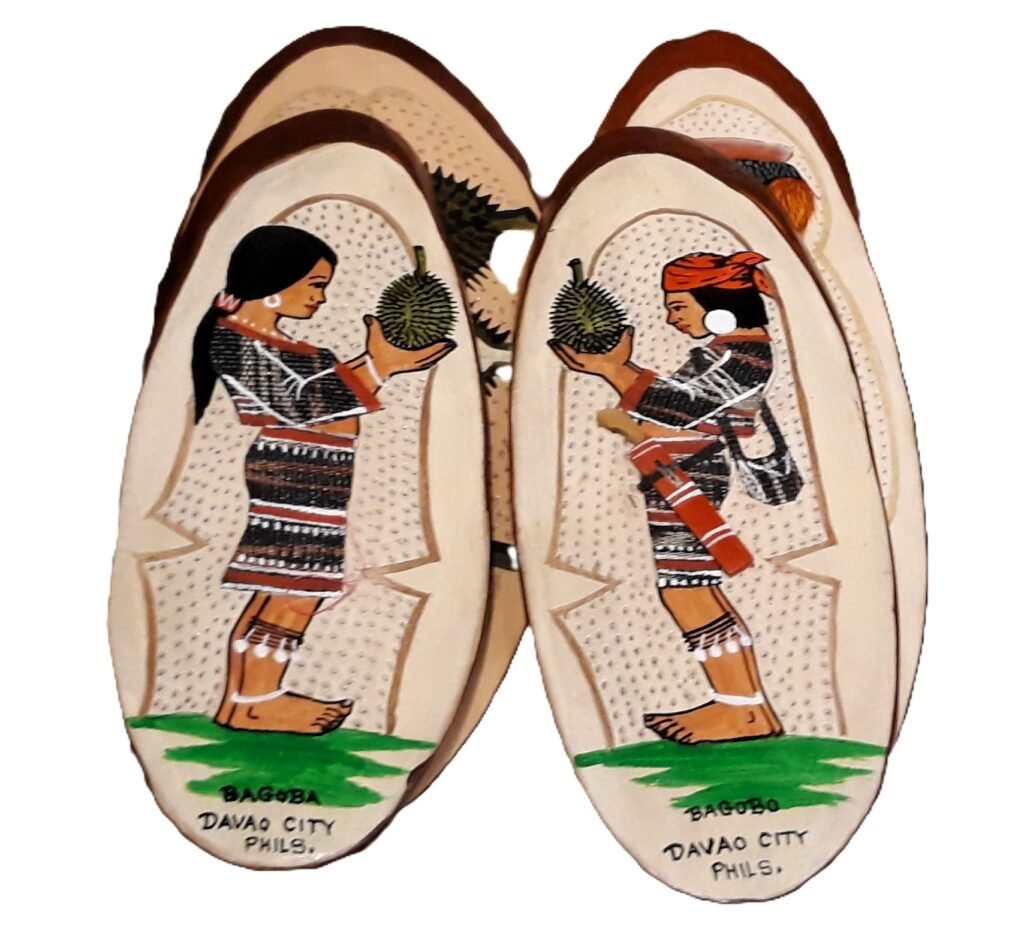
Durian in Luzon appeared to be less popular than in Mindanao.
2017 appeared to be a year for the Philippines. I visited this country four times. And each time, it was a different location. My first destination was the province of Bulacan (twice in a row), then I visited the province of Batangas. All these places are located on Luzon Island. During my stay in the abovementioned places, I changed a few accommodations: a four-star hotel in Manila, a resort in Bulacan, two sea resorts, and an ancient hotel in Batangas. During these visits, I couldn’t recall the warning signs, such as “NO DURIAN ALLOWED.” This smelly fruit was still prohibited in the hotels. However, it seemed that durians were not the favorite fruits in this part of the country. Only once did I have a chance to see durian in Calaca, Batangas. And it happened not in the hotel or local market but in the plant cantina.
During lunchtime, I shared the table with Chinese engineers involved in a construction project. There was a choice of traditional local dishes, including pork, chicken, rice, and salads flavored with ginger and other local spices. Sometimes, the Chinese had something special. Once, their colleague brought a Beijing-style duck from China.
Next to our table, the plant engineers were sitting. Some of them were delegated here from the company’s subsidiary in Davao. One day, three other guys arrived from Davao to replace their colleagues who had already stayed in Calaca for over a month. One of them put a plastic container on the table. Once he opened the box, I recognized the inimitable smell of durian. It caused mixed reactions among visitors to the cantina. The locals frowned, showing their resentment, while the Davao guys were delighted.
One local engineer told me that it is typical for people from Mindanao to be crazed about durian. It is not popular in Luzon Island, where mangoes and pineapples are considered the kings of fruits. I was okay with the pungent aroma, for I already had some Borneo experience.
Davao: Durian in Its Full Glory.
My last destination that year was Davao, which has all the rights to be called Duriania. In Davao, I happened to see durians in all their glory. Of course, they are strictly banned in the local hotels.
When I arrived at the Park Hotel from the local airport, I saw a security team at the entrance.
Along with the familiar” Welcome” was a big sign: “ ATTENTION: NO DURIAN ALLOWED” and additional information about fines for those violating the rules. A woman in uniform asked me to open my backpack and check its contents with a black plastic wand. Her male colleague held a dog, sniffing my bag and suitcase,
“ Have you any fruits in your luggage?” asked the woman.
My answer was negative.
I asked, “ What about the dog? Is it sniffing for any explosives?”
“No, sir, it is all about the durians. The dog can smell them much better than we can.”
It was funny and made me laugh. But the security remained serious.
“ A durian in the room can cause many problems for all our guests,” said the woman.
The dog paid no interest to my luggage and turned away. No durian found; you are welcome.
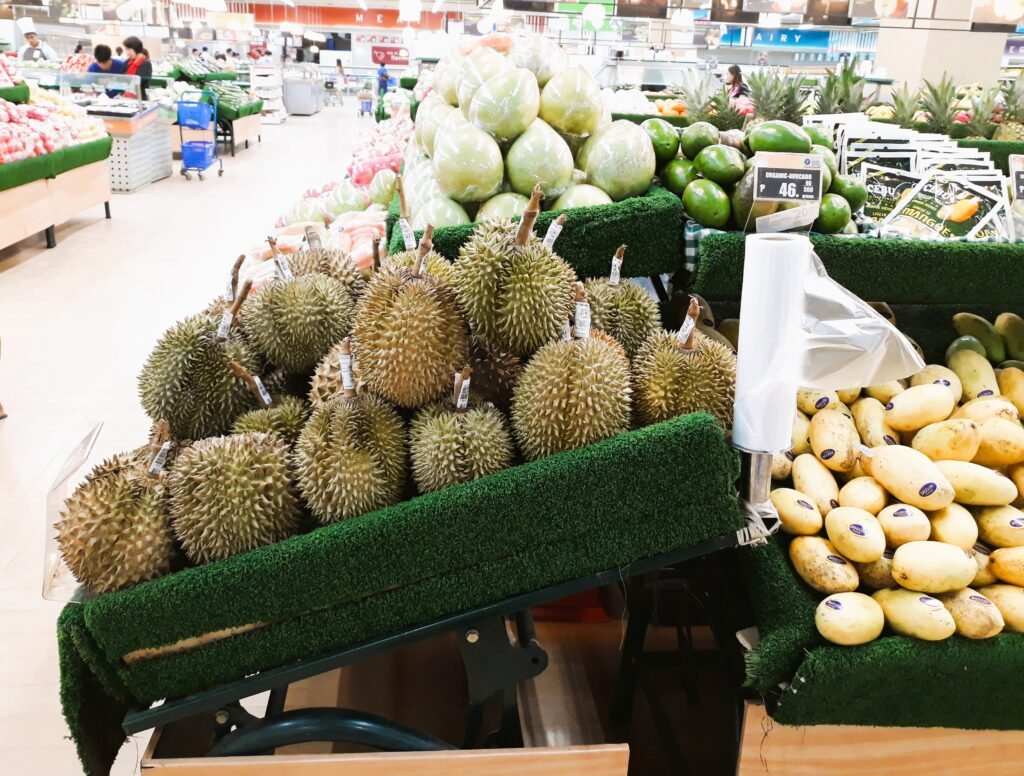
Davao appeared to be a real kingdom of durians. I discovered various delightful fruits in a big shopping mall just across the street from my hotel. Durians were everywhere: from souvenirs and T-shirts to ice cream, jam, and chocolate.
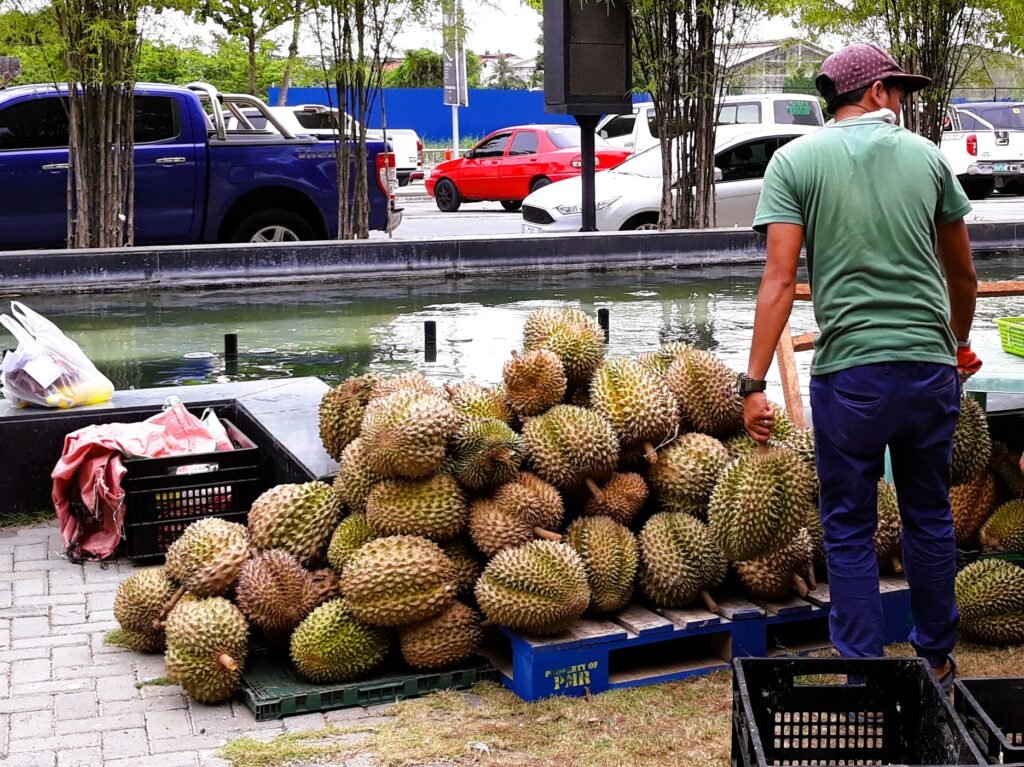
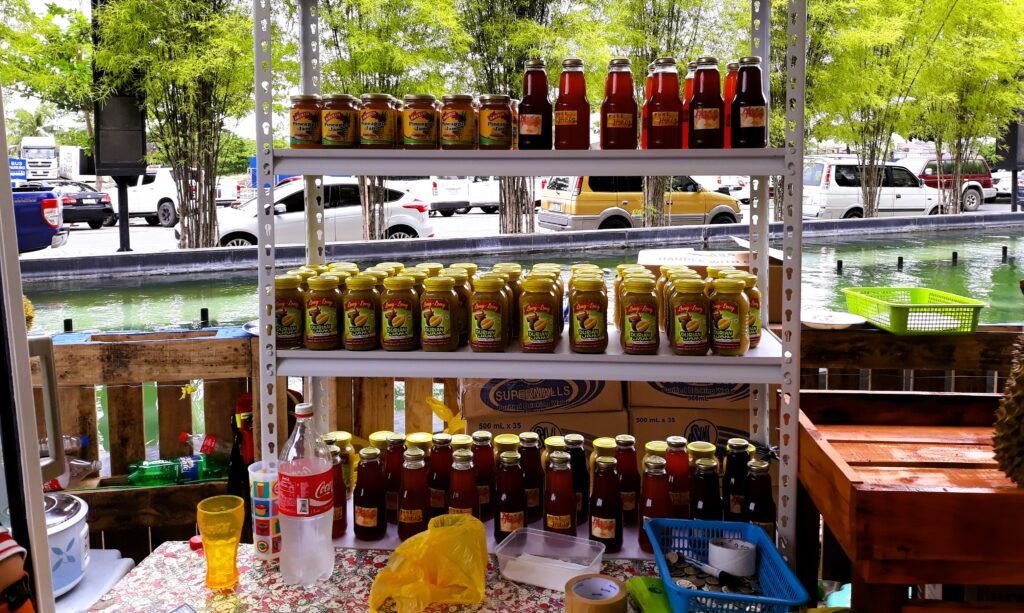
The top event devoted to his Majesty Durian was the Kadayawan Durian Festival, which took place that year from August 11 to August 13. And my hotel was just near the epicenter of the festivities (SM Lanang Premier Fountain Area). I got to know about the event on my job site. One day, a safety engineer, a local man named Rodrigo, asked me if I had already tried durian. I told him about my experience in Borneo and Java. Then Rodrigo said, “Would you like to visit the Durian Festival? It will take place next weekend, next to your hotel. We can meet there on Sunday. I will be together with my elder brother, and he is a real expert and fan of durians”.
Of course, I accepted his offer with pleasure and gratitude. It’s great to be with the local people at the event, who can explain to you many things. If you are a foreigner, it isn’t easy to understand and easy to misinterpret many details.
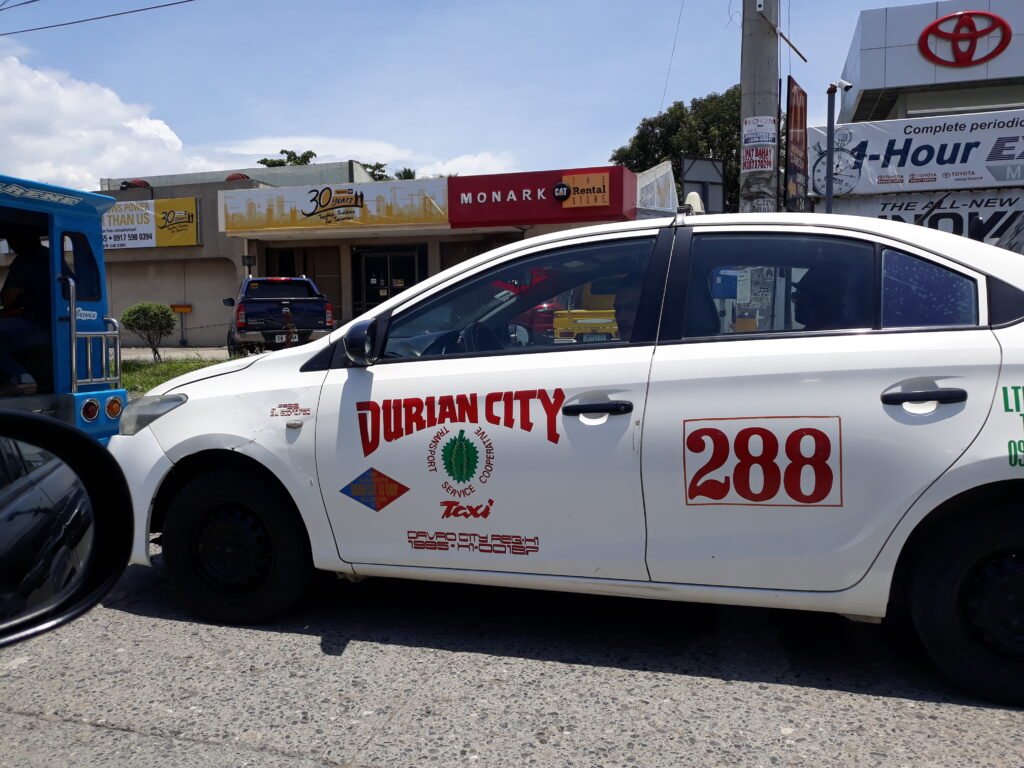
We met on Sunday morning at the SM Lanang shopping mall.
Angelo, Rodrige’s brother, appeared to be a doctor. He knew everything about durians. Angelo explains that durian can be a remedy or a poison, the same as any medicine. The whole point is to consume it right and responsibly. In this case, durian brings only delight.
“Never mix durian with alcoholic beverages,” said Angelo.
“It can be even fatal, especially for senior people with health issues. In my practice, I had many sad cases. You can see how many durians people consume here.” Well, seeing how many durians had been eaten that day was impressive. Rodrigo said there was even a durian-eating contest, with a champion who ate the most durians for a limited time. Angelo disapproved, saying, “That’s not a good idea, especially for people over 50. For many, it can be risky.”
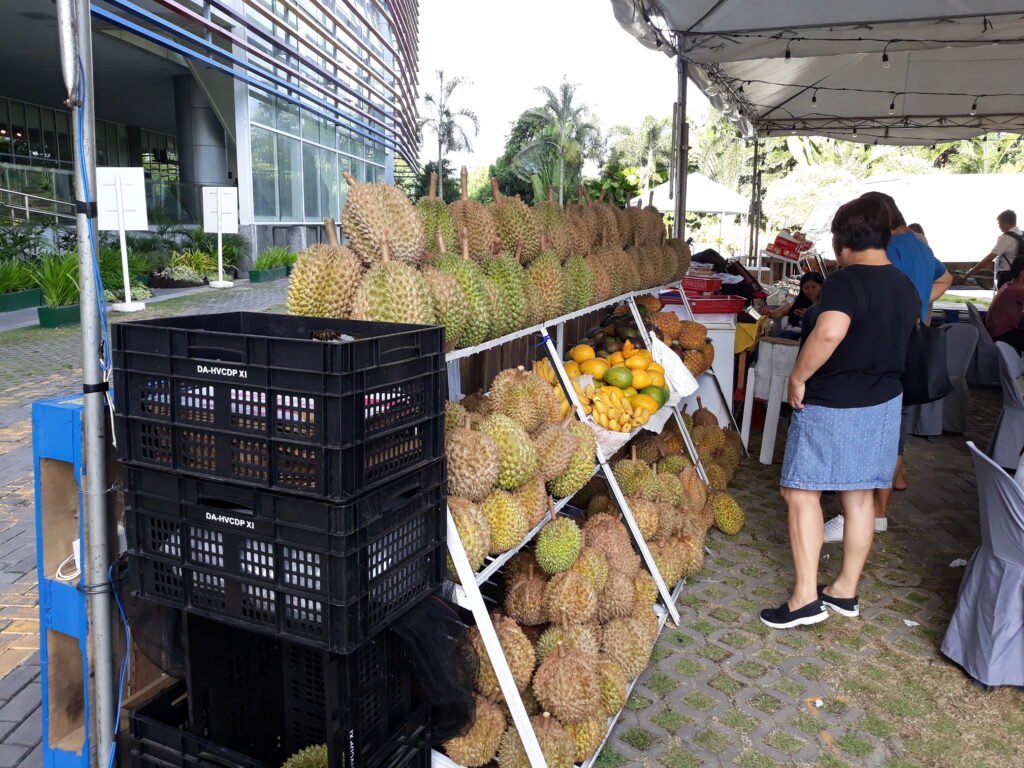
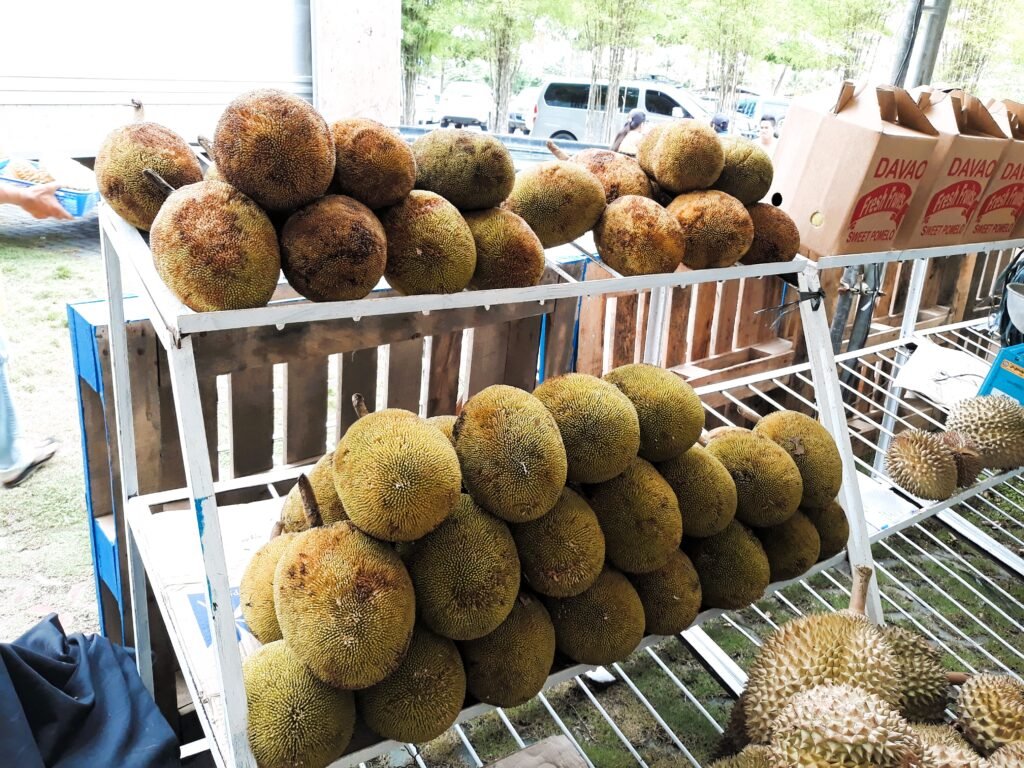
We found a free place and sat at the table. Angelo brought a couple of durians, already professionally cut into pieces. The flashy seeds were not white, but pink. Angelo explained that there are many varieties of durians: different sorts, grades, and commercial values. Some of them are expensive. For the Philippines, it is also an important export product. The primary importer, of course, is China.
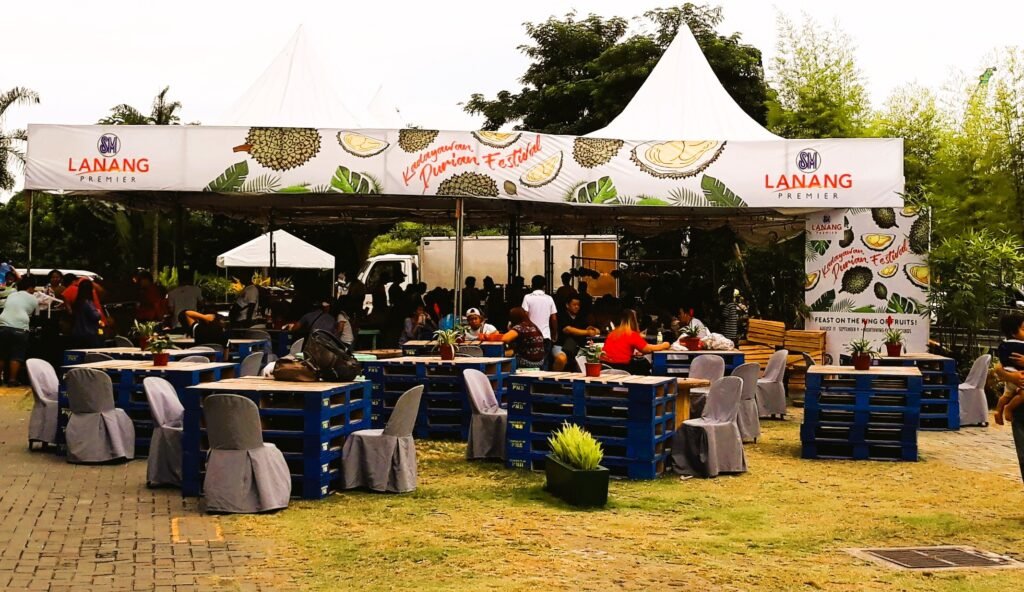
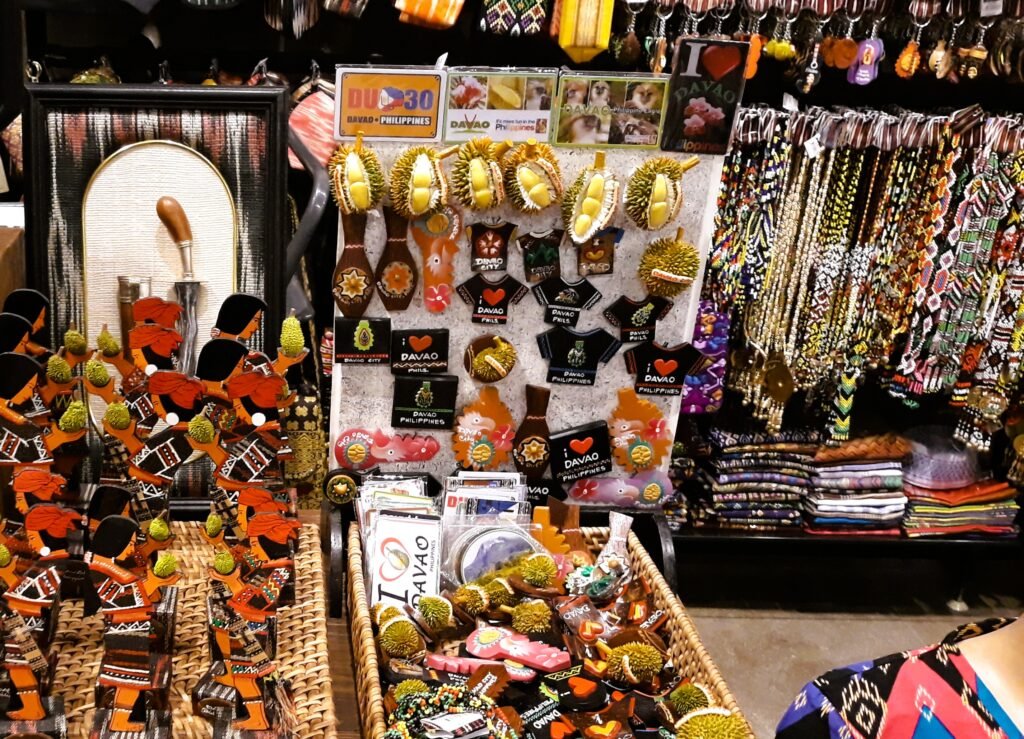
Then we visited other events devoted to the king of fruits, which were organized just in the shopping mall: exhibitions, dancing shows, etc.
In the following weeks, I explored many interesting places in Davao, and it is worth a separate story.
The Durian Festival was one of the most fascinating events I attended in Davao. It was a day to remember.


